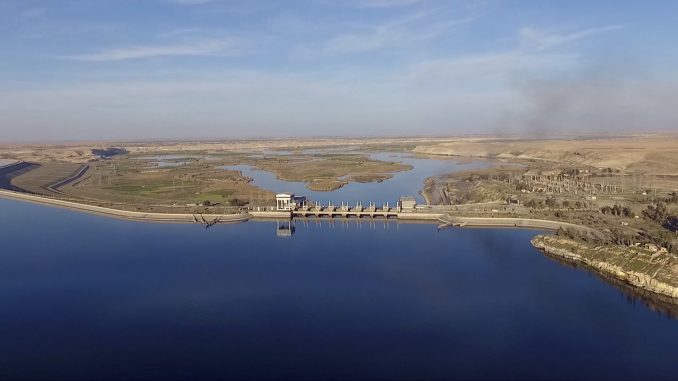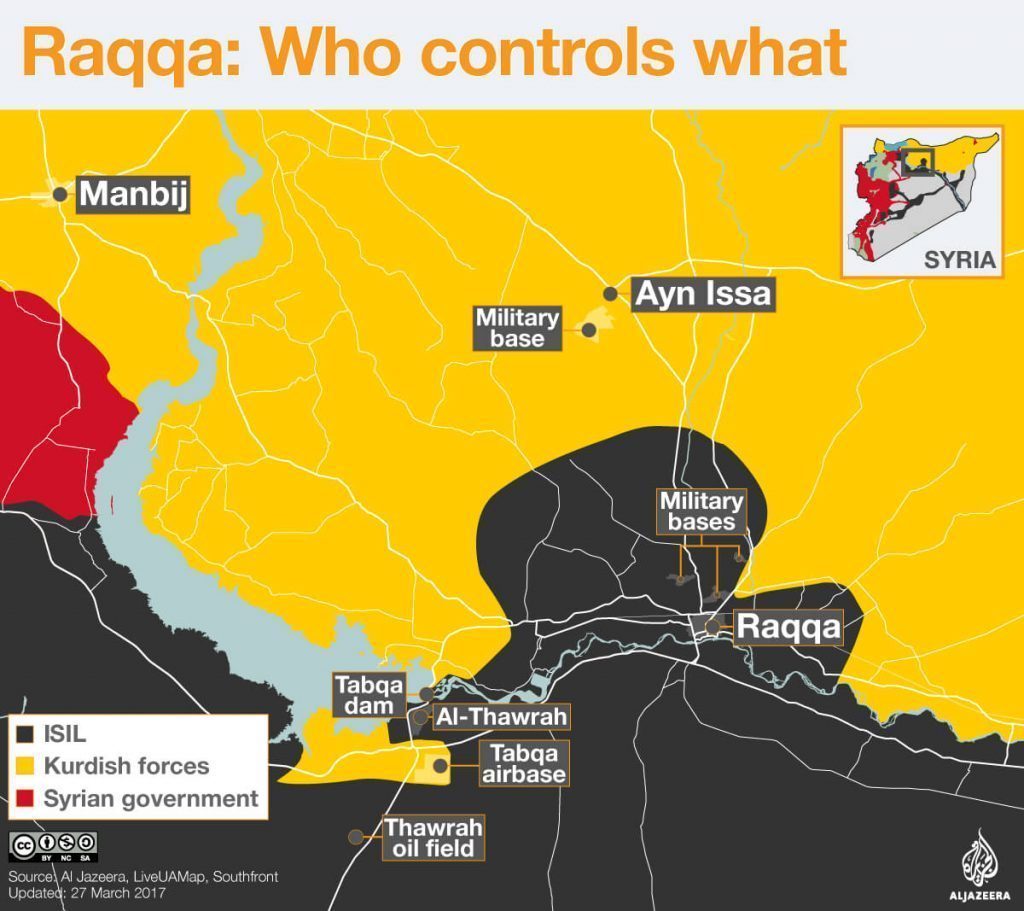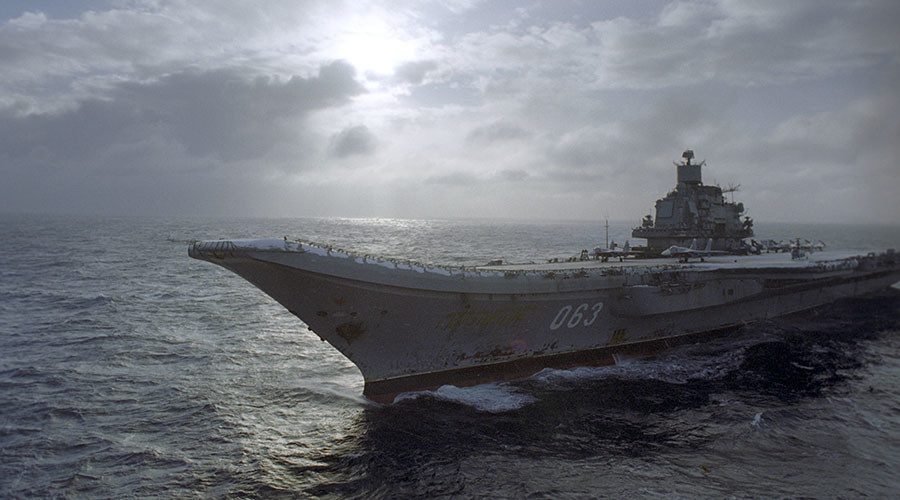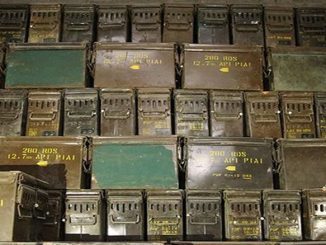
Syria’s largest dam, the Tabqa dam, may be in danger of collapse and causing a massive catastrophe as its operating facility has been damaged after US-coalition airstrikes, according to war monitor and opposition activists, while the coalition denied.
At the height of its power two years ago, Islamic State ruled over millions of people in territory running from northern Syria through towns and villages along the Tigris and Euphrates river valleys to the outskirts of Baghdad in Iraq.
However, ISIS’s territory is shrinking rapidly since last year as the US-led coalition, the Turkish-backed forces, and the Russian-backed Assad regime forces have fierce fights against its forces in both Syria and Iraq.
The Syrian Democratic Forces (SDF) alliance, which is dominated by the Kurdish YPG militia, is supported by the US as the latter uses them in its war against ISIS.
Air strikes carried out by the US-led coalition and a long fight by the SDF forces ended in recapturing Manbij from the control of the Islamic State (ISIS) group last year.
The SDF, backed by US coalition, launched also a campaign with the ultimate aim of capturing Raqqa in November and succeeded in encircling the city. Recently, they launched an assault on Deir Ezzor province to cut the road to Raqqa and surrounding ISIS effectively and were able to achieve this goal after fierce clashes.
Now, ISIS is trapped in a shrinking pocket of territory in Raqqa as the SDF forces continue to advance and gain more important locations, preparing for the final Raqqa offensive which is expected to start in April.
Dam at risk of collapse
The Taqba Dam, also known as the Euphrates Dam, is seen as a prize to push ISIL out of Raqqa, the armed group’s self-proclaimed capital in Syria.
Located about 40km from Raqqa, the dam is the biggest on the Euphrates. It stretches four kilometers across the river and is one of the few land crossings left as many bridges have been destroyed by fighting.
But the dam has also been damaged. The dam was forced out of service on Sunday after its power station was damaged, a source at the dam told the AFP news agency.
The director of the Syrian government’s General Authority of Euphrates Dam that formerly operated the huge project blamed U.S. strikes in the past two days for disrupting internal control systems and putting the dam out of service, and warned of growing risks that could lead to flooding and future collapses.
“Before the latest strikes by the Americans, the dam was working. Two days ago, the dam was functioning normally,” Nejm Saleh told Reuters.
“God forbid … there could be collapses or big failures that could lead to flooding,” Saleh said.
ISIS had also issued warnings that the dam could collapse “at any moment”, releasing pictures showing what it said was the structure’s control room after it had been damaged by US air raids.
The local activist group “Raqqa is Being Slaughtered Silently” published photos and videos online for the US airstrike that damaged the dam, in addition to the critical damage that followed.
#Raqqa video shows US warplanes "US AC-130" bombing the Euphrates dam in #Tabqah in the night #Syria #ISIS pic.twitter.com/IL5LPMtNzs
— الرقة تذبح بصمت (@Raqqa_SL) March 26, 2017
#Raqqa maps photos shows that the Coalition warplanes destroyed the Euphrates Dam administration building in #Tabqah #Syria #ISIS pic.twitter.com/iAtQFnPwtu
— الرقة تذبح بصمت (@Raqqa_SL) March 26, 2017
A catastrophe is coming
The UN has warned that damage to the dam “could lead to massive scale flooding across Raqqa and as far away as Deir Ezzor” province downstream to the southeast with “catastrophic humanitarian implications”.
Engineer Aboud al-Haj Aboud who was the head of the electricity division of the dam said on social media that if indeed the control room is busted and the gates of the dam cannot be opened, it will still take at least a month for the waters being held back by the dam to overflow the top of the structure.
Hakam Tawfik, a structural engineer who worked on the construction of the dam, said that it looked like the facility had been critically damaged.
“I’ve seen the pictures on the internet and the control and operations room had been fully burned, which means there is no control of the water coming into the dam,” he told Al Jazeera from Remscheid in Germany.
“This will lead to a real catastrophe because there is no way from inside the dam to get rid of the water. The situation will escalate because as more cubic meters come in, the situation becomes more dangerous,” Tawfik added, calling for an emergency operation.
“We need someone to interfere to stop this catastrophe because water will overcome the dam and we don’t know what we could do and how many days it would take to collapse – people living along there along the Euphrates are in danger.”
The Raqqa activist group also made an interview with the ex-manager of the dam, engineer Abduljawad al-Sakran, to explain the expected danger and how to avoid it.
Mr. al-Sakran said “if the Tabqa & Tishreen Dams were to fail, the disaster will affect the ENTIRE Euphrates basin. Major catastrophe affecting millions”
He demanded to stop all the military operations near the dam especially in Tabqa city, as every airstrike causes shaking in the ground that effects the dam’s structure. In addition, he said that alternative measures must be used to control the dam again.
“Most critical component to avoid Dams’ failure: electrical generators for the doors to reduce water levels beyond the danger,” he said, adding that stopping or greatly reducing the water flow from Turkey will help in reducing the pressure on the dam and delay and major damage to its structure.
#الرقة_تذبح_بصمت#Raqqa #Syria #ISIS #YPG
Photos show the destruction in control Room of #Euphrates dam pic.twitter.com/b4x9kSxqPM
— الرقة تذبح بصمت (@Raqqa_SL) March 26, 2017
Summary:
1- stop all fighting inside the dam
2- stop water flow from Turkey
3- stop bombing Tabqa
A. Sakran
Ex Mgr Tabqa Dam https://t.co/07jYQrhK8Q— Weddady (@weddady) March 27, 2017
US and SDF: “Dam is not in danger”
An SDF spokesman denied that coalition strikes hit the dam structure and said the airdrop landing last week was conducted to prevent any damage to the main structure by engaging the rebels away from the dam.
“The capture of the dam is being conducted slowly and carefully and this is why the liberation of the dam needs more time,” Talal Silo said, adding that ISIL fighters had dug inside the dam knowing they would not be hit for fear of damaging the dam.
In addition, the SDF declared a pause in operations for four hours on Monday “to allow engineers to inspect the dam.”
The SDF’s decision to briefly stop operations followed a request by the Syrian government’s water authority, with officials blaming US air raids in the past two days for disrupting internal control systems and putting the dam out of service
The SDF later said engineers had entered the dam and found no damage or “malfunction”.
Also, the US-led coalition said it saw no imminent danger to the dam unless ISIS fighters planned to blow it up.
“We do not assess the dam to be in imminent danger unless ISIS plans to destroy it,” said Colonel Joseph Scrocca.
“The SDF are in control of a spillway north of the dam that provides water to an irrigation reclamation canal which can be used to alleviate pressure on the dam if need be. If the lake reaches dangerous levels the SDF can relieve the pressure through alternative means.”
But it remains unclear whether engineers accessed the site.
The Syrian Observatory for Human Rights denied the SDF’s statement, according to news agencies’ reports.
It said technicians inside ISIL-held Tabqa did not reach the dam during the ceasefire to reactivate its main power controls. There was no explanation given.
The Syrian crisis began as a peaceful demonstration against the injustice in Syria. Assad regime used to fire power and violence against the civilians and led to armed resistance. 450.000 Syrians lost their lives in the past five years according to UN estimates, and more than 12 million have lost their homes.




